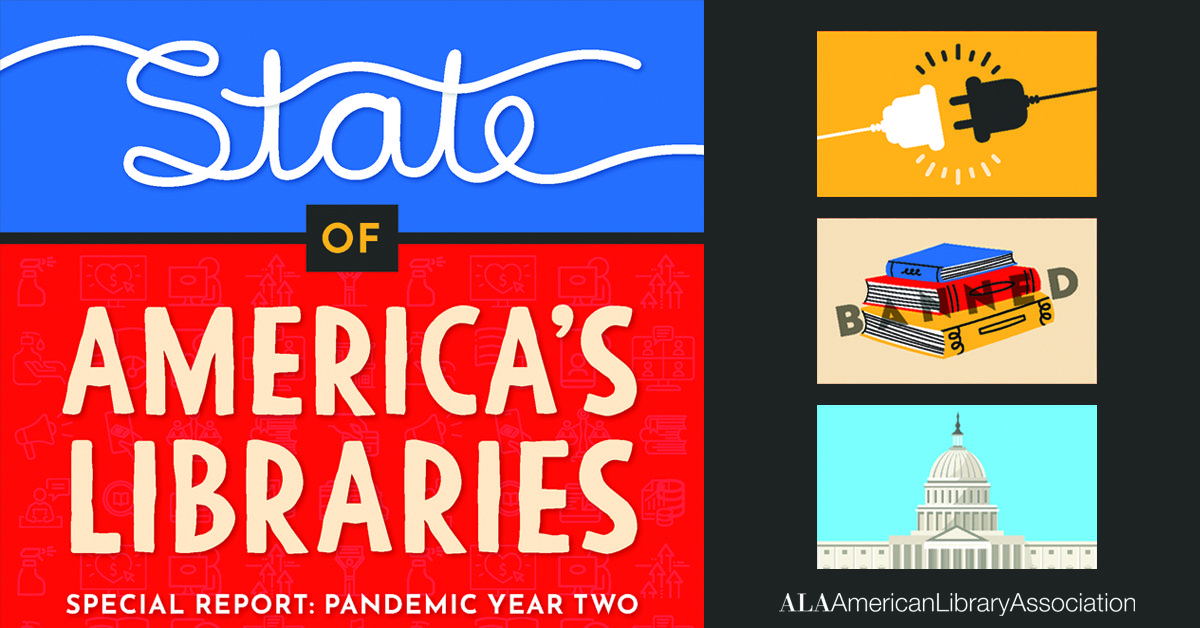On April 4, the American Library Association (ALA) released the State of America’s Libraries Special Report: Pandemic Year Two, a snapshot of the library community’s resilience, determination, and innovation in unprecedented circumstances. The report, which comes out annually during National Library Week, highlights how US libraries navigated the second year of the pandemic, an upswing in book challenges and banning across the country, and innovative ways that libraries met community needs.
Censorship at an all-time high
Library staffers in every state faced an unprecedented number of attempts to ban books in 2021, the report finds. ALA’s Office for Intellectual Freedom tracked 729 challenges to library, school, and university materials and services, resulting in more than 1,597 individual book challenges or removals. Most targeted books were by or about Black or LGBTQIA+ persons. These are the 10 most-targeted books.
“The 729 challenges tracked by ALA represent the highest number of attempted books bans since we began compiling these lists 20 years ago,” said ALA President Patricia “Patty” Wong in an April 4 statement. “We support individual parents’ choices concerning their child’s reading and believe that parents should not have those choices dictated by others. Young people need to have access to a variety of books from which they can learn about different perspectives. So, despite this organized effort to ban books, libraries remain ready to do what we always have: make knowledge and ideas available so people are free to choose what to read.”
Additional key findings
- As libraries pushed back against attempts to censor diverse books, they also got more innovative about supporting equity, diversity, and inclusion efforts in their communities by prioritizing EDI-specific programming.
- The Library of Congress replaced the subject headings “aliens” and “illegal aliens” with the new headings “noncitizens” and “illegal immigration.”
- As COVID-19 vaccinations became available, libraries helped their communities navigate the complex online appointment system. Some libraries offered “vaccine hunting” services and some even served as vaccination sites and distributed free testing supplies.
- More than half of public libraries report circulating technology, including laptops, hotspots, and tablets, for off-site use.
- More than half of public libraries report providing streaming programs, including storytimes and author events.
- The FCC estimates that 14.5 million Americans lack broadband internet access, but the real number may be higher.
- More than 34% of libraries, including those in rural areas, cannot improve bandwidth because faster speeds are not available.
- More than 88% of all public libraries offer formal or informal digital literacy programming.
- More than one-third (36.7%) of public libraries have dedicated digital literacy and technology programs and training staff.
- More than one in five libraries provide classes or informal help related to coding, computer programming, robotics, and 3D printing.
- Americans still prefer print books over ebooks by a margin of 3 to 1 but ebook usage increased by 25-20% in 2021.
To learn more, check out the full State of America’s Libraries Report.



